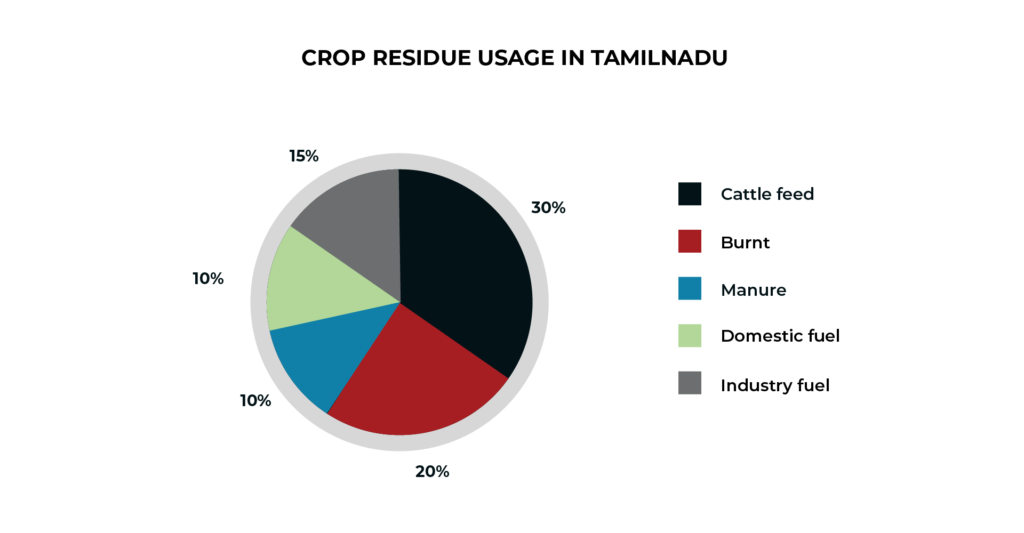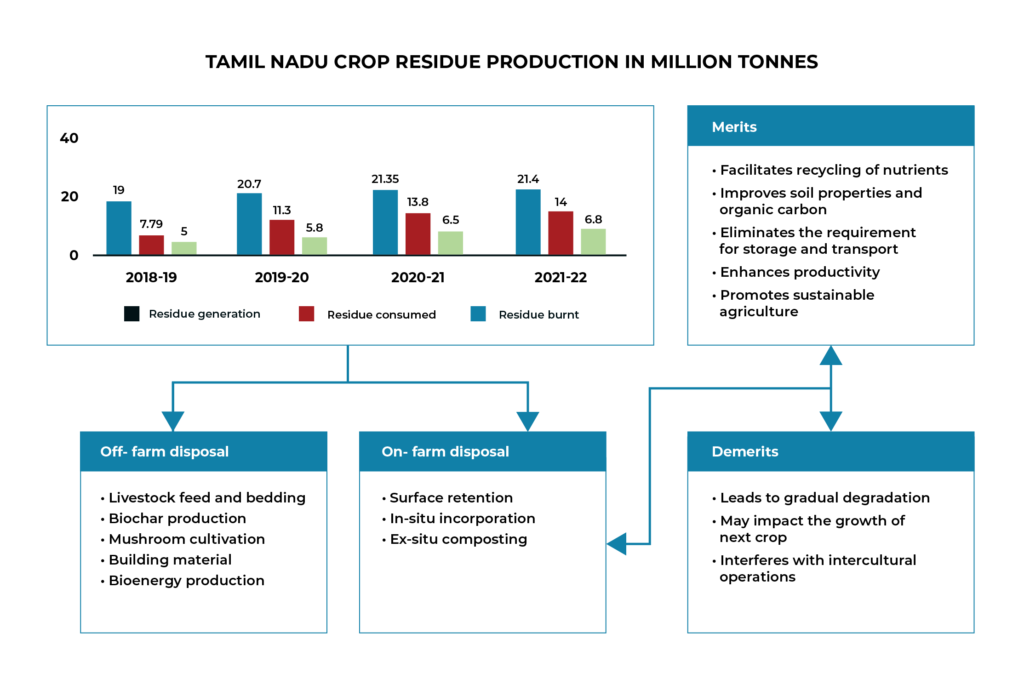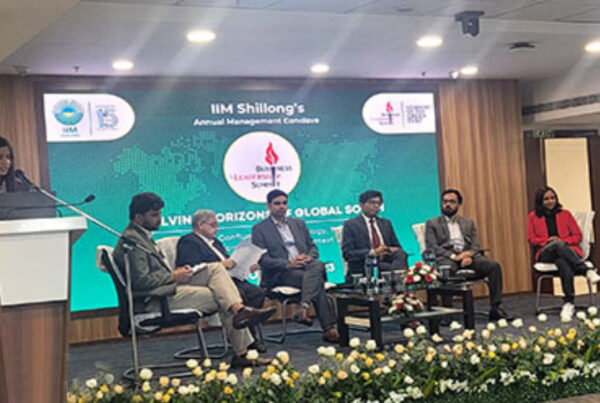Biomass market
- Biomass refers to the bio residue from crop production, agricultural waste, vegetation, and forestry and organic waste.
- It is a major source of energy generation, with bright prospects.
- Bagasse (from sugarcane), rice husk, rice straw, cotton stalk, coconut shells, soya husk, de-oiled cakes, groundnut shells, saw dust as well as wastes from coffee and jute are considered key agricultural biomass products.
- India’s agricultural biomass volume is estimated to have recorded a CAGR of 4.75% over the last five years and is forecast to increase at a CAGR of 3.5% over the next 7-8 years (by 2030).
Outlook for the biomass market
Rice, wheat, and maize are the three commonly cultivated food grains. These also account for a sizeable share of the overall crop waste in India.
- Agricultural biomass can be classified as:
- Primary residue: Produced on the field during harvesting; comprises rice straw, sugar cane tops, ground nuts and gingelly thrashes, etc.
- Secondary residue: Co-produced through crop processing; includes rice husk, bagasse, groundnut shells, coconut shells, etc.
- Cereal crops (rice, maize, millets) contribute 70%, while rice paddy alone accounts for 34% of the crop residue in the state of Tamil Nadu (TN) in southern India.
- In TN, crop residues are primarily used as bedding material for animals, livestock feed, bio-manure/compost, thatching for rural homes, mushroom cultivation, fuel for domestic and industrial use, etc. However, a large portion of crop residue is burnt ‘on-farm’ primarily to clean the field for sowing the next crop.

Growth drivers and trends
The Government of India’s initiatives and policies, such as the National Biofuel Policy and National Biogas and Manure Management Program, aim to encourage the use of agricultural biomass and promote sustainable agriculture and rural development.
Primary factors driving the biomass market are:
- Rising interest in alternative fuels owing to uncertainty in fuel prices
- Higher demand for plantation biomass from the power sector
- Increase in government initiatives for bio-energy
- Continuous rise in emission levels
Challenges
Some of the agricultural biomass has lower calorific value. Therefore, refining it for more energy-efficient output becomes expensive.
The TN agricultural biomass market is plagued by challenges such as:
- Variation in seasonal availability; pricing; difficulties in collection, storage, and transportation; stringent rules and regulations; and rising competition among key players
- Higher processing/separation cost for crop residue as usable biomass
- Lack of viable options making sustainable management of surplus paddy residue in the Cauvery Delta area a highly challenging task for farmers
To conclude
- The Indian market for agricultural biomass appears promising, considering the growing requirement for renewable energy, organic fertilizers, animal feed, and sustainable products.
- The demand for clean and reliable power is increasing from businesses across India. Biomass, as a source of energy, is expected to play a crucial role in meeting the demand.
- Continued efforts in research, development, infrastructure, and policy support will help in further unlocking the potential of agricultural biomass in India and TN.

AGR has been supporting the biomass industry by studying markets and opportunities for crops, plantation, solid waste biomass and biofuels. We carry out opportunity assessment and product prioritization studies to enable companies to ascertain the techno-economic feasibility of the project and identify appropriate technology partners.
For more information on our research services and insights on agricultural biomass, please connect with S. Ashok, Associate Director in our Chennai office, or R. Subramaniam, Executive Vice President at Avalon Global Research, Mumbai.




